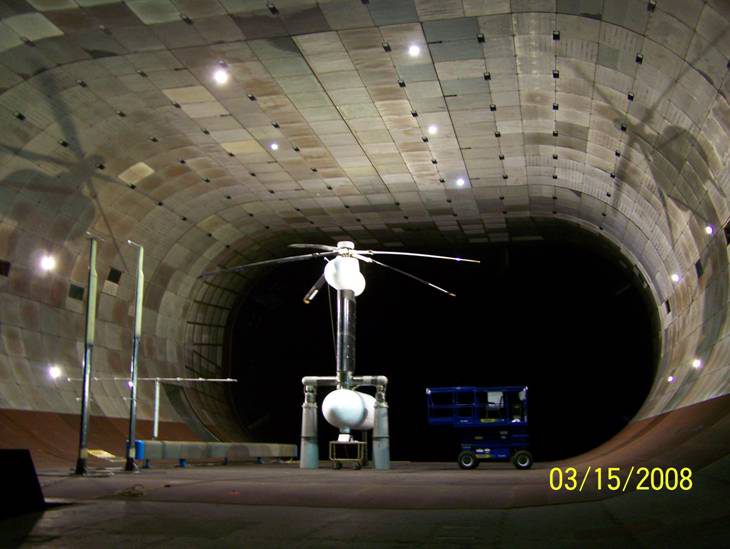스마트 로터 (NASA)
김용식 | 2010-06-18 20:08:31
조회 3821 | 추천 0 | 다운로드 3

스마트 로터 시험기체

쩝..부러운 윈드터널...

스마트 로터에 들어가는 녀석.
Routine transportation by rotorcraft could help ease air traffic congestion around the nation's airports. But noise and vibration must be reduced significantly before the public can embrace the idea.
The solution could lie in rotor blades made with piezoelectric materials that flex when subjected to electrical fields, not unlike the way human muscles work when stimulated by a current of electricity sent from the brain.
Helicopter rotors rely on passive designs, such as the blade shape, to optimize the efficiency of the system. In contrast, an airplane's wing has evolved to include flaps, slats and even the ability to change its shape in flight.
"SMART rotor technology holds the promise of substantially improving the performance of the rotor and allowing it to fly much farther using the same amount of fuel, while also enabling much quieter operations,"
A SMART Rotor using piezoelectric actuators to drive the trailing edge flaps was tested in the 40- by 80-foot tunnel in 155-knot wind to simulate conditions the rotor design would experience in high-speed forward flight. The rotor also was tested at cruise speed conditions of 124 knots to determine which of three trailing edge flap patterns produced the least vibration and noise. One descent condition also was tested.
Results showed that the SMART Rotor can reduce by half the amount of noise it puts out within the controlled environment of the wind tunnel. The ultimate test of SMART rotor noise reduction capability would come from flight tests on a real helicopter, where the effects of noise that reproduces through the atmosphere and around terrain could be evaluated as well.
-------------------------
쩝...원문복사했는데 오류계속떠서 이거 하느라 진땀뺀...
왜그러는지..
------------------------
전에 Morphing wing에 대해 사진 몇장 올렸었죠.
그 윙이 꽤나 효율을 높혀준다라는데
여기 NASA서 하는 스마트 로터를 찾게ㅤㄷㅚㅆ네요.
DARPA 미육군 보잉에서 꽤나 오랜시간 테스트해온 프로젝트라고 하더군요.
역시나 효율을 높히고 소음감소를 추구한다고 하네요.
(쩝.; 원문에 그렇게 나와있어요.; 전 번역한것뿐.;;; =3=3=3=3)
쩝..이번 쉬는기간동안 좀 찾아볼 부분이군요 :)







댓글 [0]